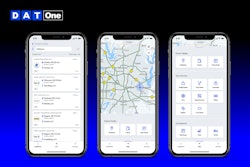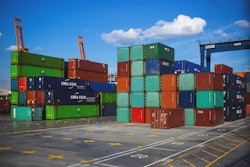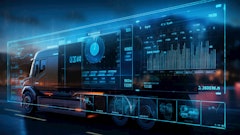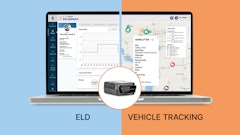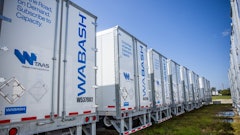
By nature, trucking is very much a physical, analog world. Freight doesn’t get moved by bits and bytes, but by a real-world tractor and trailer piloted by a human being. That isn’t going to change soon.
But, there is an accelerated movement to digitizing all business processes, which allows the efficient operation of trucks and movement of freight. Here are five key factors driving this movement:
- Changes in freight patterns
One of the biggest impacts of the Coronavirus disease (COVID-19) pandemic has been a rethinking of our supply chain infrastructure. Truckers and shippers spent the last 20 years building highly efficient logistics systems to ensure raw goods are available just-in-time at manufacturing plants and finished goods can be delivered to retailers as close to the point of sale as possible. The goal has been to reduce inventories and thereby overhead cost. This has been a huge win for the consumer and the economy as a whole. There is no question that we would have seen much higher increases in the CPI (Consumer Price Index) over the past few decades were it not for the finely-tuned logistics system.
But, the pandemic exposed weaknesses in this system. When manufacturers around the globe were suddenly forced to shut down or restrict activities, the flow of goods was interrupted and supply chains broke down. Suddenly, having just-in-time inventory levels was no longer a good idea. Moving forward, it’s likely the industry will build more buffers into the system, so that manufacturers, wholesalers and retailers don’t run out of inventory so quickly.
We also see supply chains being shortened to prevent extended delays in receiving product. More goods currently being manufactured overseas will be made locally. This will change many of the freight lanes and patterns that fleets currently use. It will also make it more important to have efficient ways to bid on freight contracts and manage freight movement using digital tools such as Electronic Bill of Lading (eBOL).
- Growing need for contactless transactions
The pandemic has also heightened awareness of the risk of infection with frequent handling of paper and physical interactions. Digitization can eliminate a lot of the paper handling as well as enable social distancing across logistics partners to reduce the risk of transmitting COVID-19 or other infectious diseases.
As more transactions are digitized, logistics teams will have greater flexibility in where and when they work. The pandemic has shown that it’s possible to run businesses, including transportation companies, “virtually” if information is in digital form. Progressive employers began their digital transformation initiatives way before the pandemic. Besides the health and safety benefits, the productivity and visibility gains make going digital an obvious decision for those just getting started. This trend to more home-based work will lower companies' office costs and reduce traffic on roads in urban areas, helping trucking fleets deliver loads more efficiently.
- Increased emphasis on cash flow
Entering 2020, many fleets were already under financial pressure with lower freight volumes and lower rates due to industry over-capacity. Pandemic-related government funding such as PPP loans provided a lifeline to many fleets, but it has simply postponed the inevitable for fleets with the weakest balance sheets. Expect a lot of industry consolidation in the second half of 2020 and into 2021. The fleets that survive will need to have increased focus on cash flow, the lifeblood of any business.
Digitizing load documents improves cash flow by compressing the time from freight delivery to payment. Drivers can submit proof-of-delivery electronically minutes after the freight is on the dock and the shipper can be invoiced shortly thereafter. Digitizing this process also helps increase the accuracy of the invoicing and reduces the number of missed billings. It all adds up to increased cash flow for the fleet and a stronger financial position.
- Higher focus on customers
With the expected changes in freight patterns will come an increased need to bid on new freight contracts and engage with new customers. Fleets with time-consuming paper processes in back offices will be at a disadvantage to those with digital processes. Fleets have reduced man-hours on freight processing and invoicing significantly by digitizing. As well as sparing back-office personnel the tedium of manually entering freight proof of deliveries, digitizing reduces manual entry errors. It also frees back-office personnel to spend more time recruiting new customers and retaining existing business.
- Added smarts to freight and driver management
In the old analog world, fleets rely on phone calls and relationships with brokers and shippers to anticipate the source and destination of loads. That system won’t cut it in an increasingly competitive freight business. Progressive fleets manage their freight digitally and use artificial intelligence to calculate optimal load routing and pricing. It may also include automated ways to calculate a drivers’ ETA at a load destination or a way to recommend the best loads for specific drivers based on their qualifications, work history, etc. As more shippers move to electronic freight quotes and electronic bills of lading, fleets will have a greater capacity to do freight analytics and make quicker decisions on which freight and freight lanes to focus on. Moving forward, fleet profitability will hinge a lot more on this. Fleet managers simply don’t have the capacity to do these calculations and predictions manually.
The bottom line for fleets is they will lose competitiveness if they stick with old paper-based information systems and manage their loads with manual systems. Since it is very difficult to fully transform them to digital systems, expect to see a lot of hybrid solutions over the coming months and years. Paper documents will be scanned by drivers and pushed into a digital format as easily as possible. Fleets will also be putting more pressure on shippers to move to eBOLs, so that this step can be eliminated. Also expect to see a lot of fleets adopting automated workflows to bring information into their management software.






